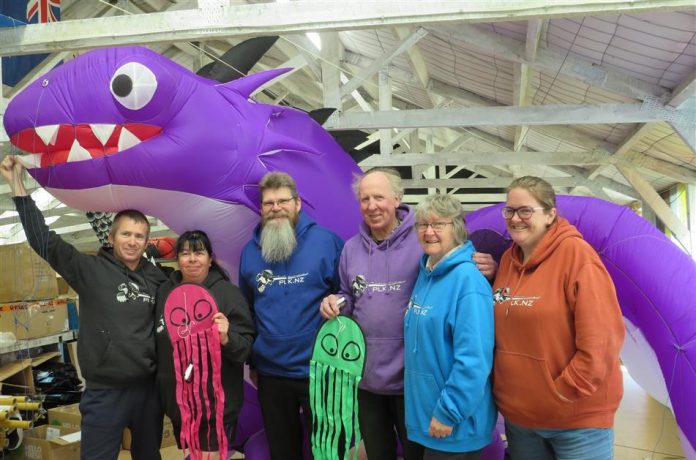
Kite makers, designers and flyers from around the world will descend on Ashburton this weekend to celebrate the 50th anniversary of internationally renowned Peter Lynn Kites.
Celebrations for one of Ashburton’s most famous enterprises will include two days of kite flying, against the spectacular backdrops of Lake Hood on Saturday, and Lake Clearwater and Lake Camp on Sunday.
Founder of the business is Peter Lynn of Ashburton, who said his interest began when his mother started to make kites with him as a child.
“Our house was a flat-roofed two-storey house, and I used to sneak out the window and fly kites from the roof. I wasn’t allowed to, but I did,” he said.
Today he is still involved and helps out owners, Simon Chisnall and Craig Hansen.
The trio are excited about this weekend’s flying events, and also the social celebrations, where they are expecting more than 75 people.
They said many would be former employees coming from overseas, as well as fellow kite-crazy friends and customers.
“It’s not really an event, we’re just going out there to fly kites,” Chisnall said.
“Most of our customers are our kite-flying friends, it’s a very small community worldwide,” Hansen said.
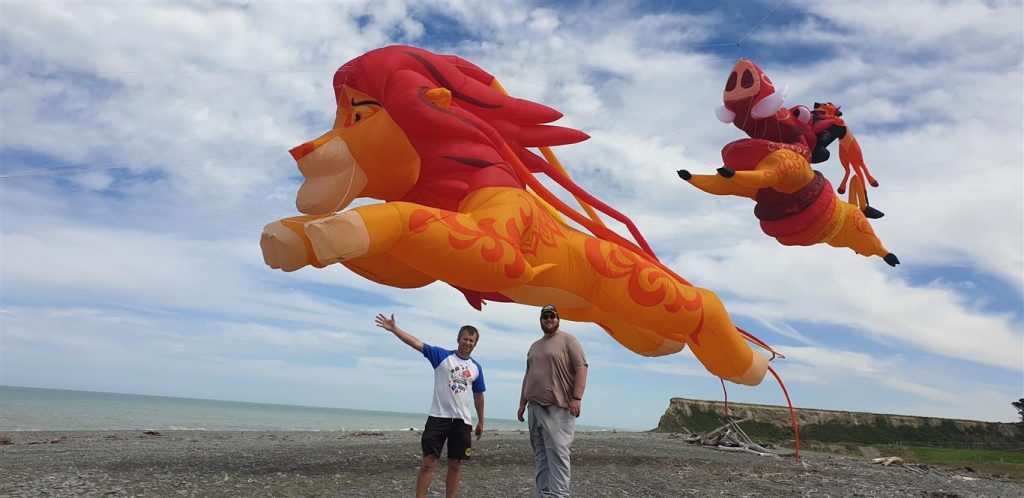
Lynn said his childhood interest was piqued further when he was a pupil at Allenton School.
It was there he had his “first kite atrocities”, with kites made of paper, sticks, string with flour and water paste. He had school friends who became his partners in crime.
“We had a trick; I rigged a kite so when you pulled hard on the line it would pull the knot out of the kite and it would fly away.
“We used to chase it across the district, not respecting roads or private property, just straight-lining to some extent.”
Once a kite got caught in the radio aerial of a home near the school during the crucial final minutes of a game between the All Blacks and South Africa in 1956.
It cut reception to the radio. He and his fellow 10-year-old friends were chased by the irate owner.
It was his first near-death experience, he said.
His second was after biking across the playground, where there was a “melee of kite flyers” and getting a kite line caught across his neck.
His neck bled profusely and the scar was still visible many years later.
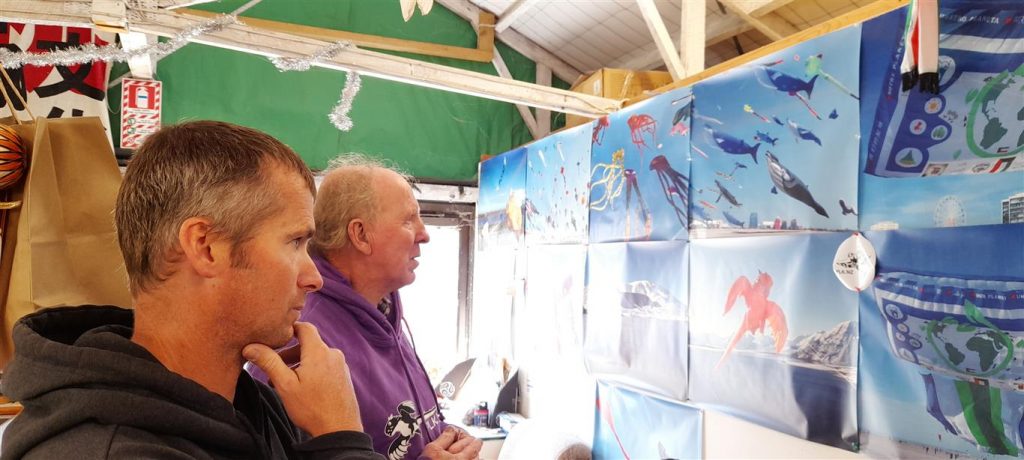
Lynn took up kitemaking when his first daughter was a toddler.
“I made a kite for her, but by then I’d had my head full of all these fancy aerodynamical theories and things. So I thought I’d make a kite and work out why they fly and settle the world to rights about that.”
It sparked an obsession and one way or another it turned out to this, he said, of the business now celebrating its 50th year in operation.
In the early days Lynn used to make kites during the week and take them to beaches such as New Brighton to fly.
They would generally draw a crowd and he would sell to interested people.
The octopus-type style was one of the best and back then it was made of cane and fabric, the eyes were drawn on with felt pen and the tail was plastic.
Then he made polystyrene kites so he could work out how kites flew.
They were a great test bed, he said.
“You can try different things very quickly. Fabric is not rigid, fabric deflects and the shape changes, polystyrene everything is rigid, it’s like an aeroplane, so it’s much easier.”
He still uses polystyrene for testing ideas.
Over the years Lynn has been a world leader in many of the industry’s developments, among them giant stick kites, the invention of the kite buggy and the advancement from fabric ribs in soft kites to a cording system and a super rip stop line system.
Removing the ribs made the kites lighter and stronger.
Those systems have become standard practice and allowed the creation of bigger soft kites including a gigantic 1250sqm kite, which was flown on a beach in France. Its tail is 80m long.
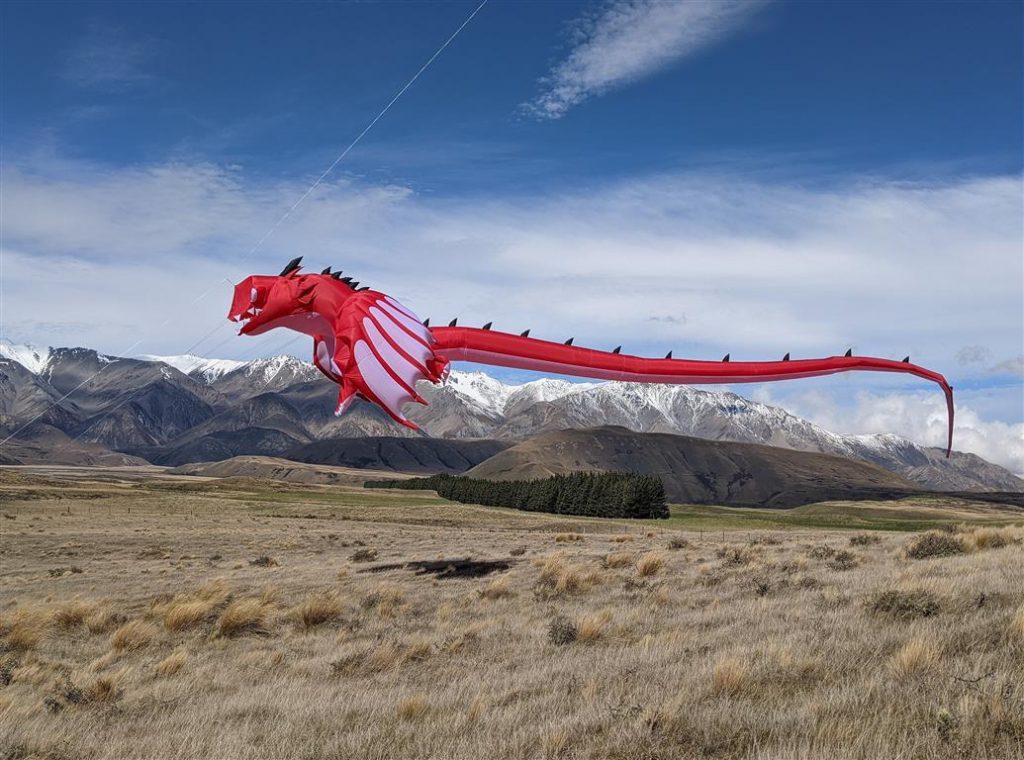
Lynn was also instrumental in the development of the fabric material used in kites worldwide, as well as other products such as paragliders, business co-owner Craig Hansen said.
It was through a contact in Korea who wanted to make the best kite fabric in the world. The Korean approached Lynn, and together they created an affordable, high standard fabric made for kite purpose.
“You’ve got to have good materials to be able to achieve what you want to do,” Hansen said.
“We fortunately have some very good customers who allow us to push the boundaries,” Lynn said.
“They’re flexible enough to allow us to experiment a little on things.”
The business’s products have been used in many international celebrations and events including for Walt Disney World’s 50th anniversary, and the opening ceremony of the 1990 Commonwealth Games in Auckland.
In 2014, 20th Century Fox sought five kites to promote the movie How to Train Your Dragon 2.
An 18m dragon kite named Toothless was subsequently flown in various locations around the United States, and towed behind a boat on the Thames in London and through the Tower Bridge.
“Simon is a phenomenal designer,” Lynn’s wife, Elwyn said, of other co-owner Simon Chisnall.
“Toothless was incredible, it had to meet the marketing demands of a very powerful company and it actually had to do the job as a kite. And he did it.”
Her husband agreed.
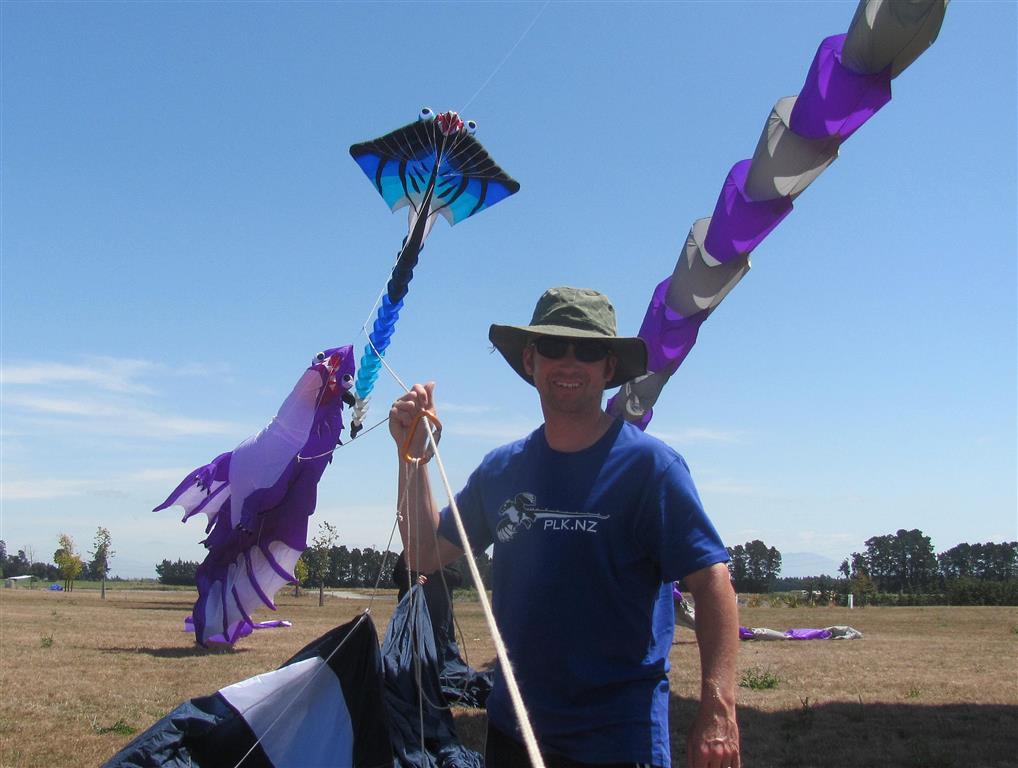
“In my view Simon is the best kite designer in the world at the moment no doubt about it,” he said.
While kites are bigger and the material technology better, it was still trial and error, and experience in kite design to get the best product.
“After a lifetime of it you get some idea of the sort of thing that might work and what mightn’t,” Lynn said.
“It’s been a great journey, it really has,” Lynn said.



